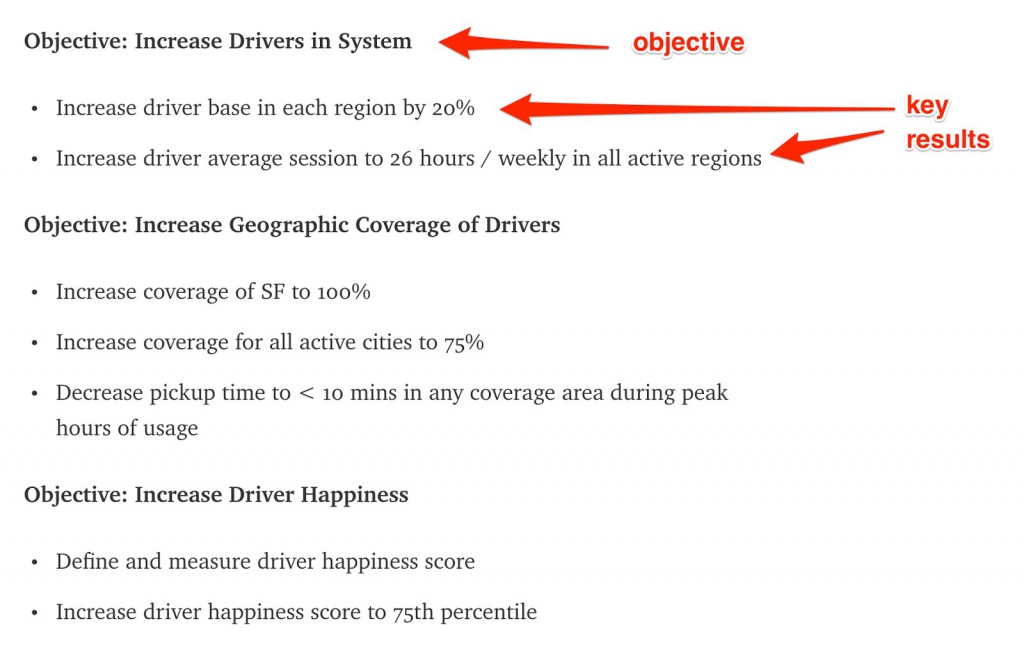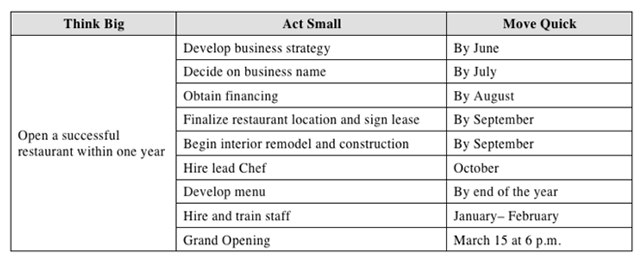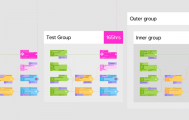5 Easy Ways to Set Goals and Objectives that Will Help You Complete Projects
- Jan 20, 2016
- By Pawel Grabowski
Frustrating, isn’t it?
You’ve poured all your energy into a project. Gathered the best people to help you make it happen. Worked tirelessly to motivate them to do their best. And spent countless hours supporting their efforts.
But in spite of it all, the end is still nowhere in sight.
What’s more, it seems that no one can remember what you were trying to achieve anymore. They just plod along hoping that someone will finally figure it out…
…and end this assignment.

“Wire” by Dean Jarvey licensed under CC BY 2.0
And it’s all because of one simple mistake:
Starting off without a clearly defined goal.
So in this post I decided to show you 5 different approaches to setting project goals and help you ensure your next project’s success.
Why is Goal Setting So Important?
I’m sure you know this already:
Goals are a staple of project planning.
They give you a long term vision, motivation and focus needed to complete whatever you’ve set out to achieve.
But did you know that most people struggle with setting goals?
According to Boston Business Journal, 90% of us are ineffective at defining project goals.
For one, we rarely write our goals down (let alone communicate them clearly with others). In fact, according to various data, only 3 out of 100 adults write down their goals on paper. And given that, on average, we have about 50000 thoughts a day, it’s easy for those unwritten goals to get lost in that mass of thoughts.
We also rarely keep track of what we’re hoping to achieve.
A survey of small business owners conducted by Staples revealed that 80% of company leaders don’t track their goals. As a result, according to the same survey, 77% of them don’t achieve their company vision.
Having well-defined, written down goals provides focus
Goals help you prioritize what to focus your efforts on next and assess the weight of your work on those goals.
Goals offer measurability to your efforts
Goals provide benchmarks to gauge your progress by, see the impact of your efforts on the project overall and establish what other actions you need to take to complete the project.
Goals also help spot potential problems early
Tracking progress in reaching goals helps spot problems early and nip them in the bud before they escalate.
5 Approaches for Setting Goals that Will Help You Complete Projects
1. SMART Goals
This is by far the most common approach to defining project goals.
SMART is an acronym that stands for:
- Specific – meaning that your goal should clearly define what you’re aiming to achieve.
- Measurable – your goal also needs to include an indicator of progress you’ll measure the goal’s success by.
- Attainable –you must have the appropriate knowledge, skill and expertise to achieve it.
- Results-focused – it should focus on results not actions.
- Time-bound – and you need to specify the timeframe for reaching the goal.
Here’s an example of a SMART goal:
“To increase organic traffic to the site from 35000 visits per month to 100000 visits per month by the end of December 2016.”
SMART goals work because they are easy to set and also reach. They provide motivation your team might require to complete the project. And because they are so specific, they also help clarify the end vision, give focus and practically oblige you to take action.
2. The OKR Approach
In this approach, invented at Intel and used by companies like Google or Zynga, you define goals by focusing on two factors:
- Objectives – broad goals you hope to accomplish.
- Key results – specific numbers or other outcomes that will signal reaching the objective.
Setting OKR goals works particularly well for teams as it allows to define strategies for the entire team as well as all individuals involved in a project and provides metrics to evaluate their output.
Here’s an actual example of OKR goals set by UBER:

(Source)
This particular approach to goal setting is often used in teams following the agile methodology.
One reason for that is the framework’s simplicity. Goals set using the OKR method are typically easy to understood. After all, to set a goal, all you need to do is mention the objective and come up with a key metric to measure the success by.
Also, the OKR method lets you set short term goals, making the project planning and development process easily adaptable to change. Naturally, the framework allows for long term goals too. Naturally however, as part of the process you should also set smaller, incremental goals at shorter goal cycles.
3. The BSQ Method
This framework, devised by psychologist David Van Rooy, focuses on defining 3 distinct components for each project: goals, milestones and deadlines.
The acronym BSQ stands for:
- Think Big – your ultimate goal,
- Act Small – milestones and objectives you need to accomplish to compete the goal,
- Move Quick – timeline for achieving each objective.
An example BSQ goal would look like this:

(Source)
The strength of BSQ method lies in its focus on action. Each goal you want to achieve is immediately coupled with actionable tasks, defined by what needs to be done but also by when.
4. ABC Goals
The ABC framework focuses on setting goals aligned with your company’s vision and mission.
ABC stands for Achievable, Believable and Controllable. In this method, you set goals that not only you and your team can achieve but are also realistic and depend on factors you can control within your business.
Example:
“Decrease a department’s paper waste by 15%”
ABC framework focuses on setting, what I’d call, “safe goals”. Albeit actionable and achievable, these goals never undermine the company’s overall vision and rarely help achieve a breakthrough in a business.
5. FRAME Goals
Finally, the Frame method shares similarities with the SMART framework. In this system you set goals that are:
- Few
- Realistic
- Agreed
- Measured, and
- Explicit
Naturally, one could argue that Explicit could also mean Specific and Time-bound, Measured could refer to Measurable while Few, Realistic and Agreed could also mean Achievable, making it almost synonymous with the SMART system.
Nonetheless, if you’re not comfortable with setting SMART goals, the FRAME model might be a system for you.
But What If You Don’t Know a Project’s Goals and Objectives Beforehand?
Fact, at times, you might have to start the work without a clear goal and a defined outcome in mind.
For instance, you might be working on a new feature for your product. And realistically, you can’t predict the project’s outcome before you go deeper into the process. It’s only when you have something usable in front of you, you can start making more detailed projections.
But that’s OK. In fact, some of the frameworks I mentioned above incorporate goal setting a part of the process.
Take the OKR method as example. It embraces dynamic planning in which setting a goal is de facto one of the objectives in the process. What’s more, the agile method largely embraces the evolving nature of a project and factors that affect it, making rendering the actual outcome upfront impossible.
By working this way, teams can react to change and other conditions that affect their final output, often being able to deliver a more complex solutions that meet their audience’s requirements right away.
And What About Working Without Goals?
I know, I made a strong case for setting clearly defined goals and showed you different approaches for doing so.
But is it possible to skip it and still complete projects without goals?
Apparently so, at least according to some.
James Clear, for instance, postulates that in a typical project, a system is more important than a goal.
According to his theory, a goal is what you’re trying to achieve. A system however is a set of practices, a process so to speak, you do every day.
And so, even if you completely ignored goals but followed the system, you should still get the same results.
Leo Babauta, a renowned productivity expert writes:
“When we fixate on goals, we shut ourselves off to new opportunities that open up in different directions — opportunities that we couldn’t have foreseen when we started out. But because we’re fixated on the goal, we don’t allow ourselves to go in this new direction.”
In their 2009 paper “Goals Gone Wild”, Lisa D. Ordóñez with colleagues identified a number of side-effects of goal setting:
“[…] a narrow focus that neglects non-goal areas, a rise in unethical behavior, distorted risk preferences, corrosion of organizational culture, and reduced intrinsic motivation.”
They also add:
“Rather than dispensing goal setting as a benign, over-the-counter treatment for motivation, managers and scholars need to conceptualize goal setting as a prescription-strength medication that requires careful dosing, consideration of harmful side effects, and close supervision.”
But are they right?
I’ll actually let you decide.
As for me, whenever I hear opinions about working without goals, I think of this quote by the famous American baseball catcher and manager, Yogi Berra:
“You’ve got to be very careful if you don’t know where you are going, because you might not get there”.
The Author
Pawel Grabowski is a freelance web copywriter working exclusively with SaaS and software companies. He honed his project management skills while running a software company where he had to manage numerous development projects simultaneously. You can find out more about him at http://smashingcopy.com.
Header image: “you make it complete” by Tim Geers is licensed under CC BY 2.0






Pingback: How to Project Manage Reaching Your Goals | It's All You Boo()
Pingback: Blog Post 4 – References – Aesthetic Justice()